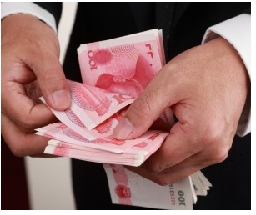
Imagine for a moment that you have a credit card with a limit of a few trillion dollars but with one caveat: you need to use those funds exclusively to provide for your family. It sounds easy, until you realize your “family” is 1.1 billion people.
The Chinese government is in a similar position, but not only does it need to provide for its “family,” government-driven economic growth underpins China’s social stability, and ultimately empowers the Communist Party of China.
But China’s economy is being fueled private enterprise, too.
Gordon Houlden, director of the China Institute at the University of Alberta, says the Chinese economy is more of a mix of private and public enterprise than most people realize.
“A far greater percentage of China’s economy is in private hands, versus what is the case in Canada. And that’s not very well understood,” Houlden says.
Though China’s economy has slowed more than expected in 2012, the country’s GDP growth is still expected clock in at around 7.4% in 2012, more than triple Canada’s forecast of 2.2%.
China’s National Bureau of Statistics reports that over the last 20 years, household consumption has increased at about 8% annually, higher than in any other major economy.
Numbers unsustainable with public stimulus measures alone.
To fuel ongoing economic growth and rapid urbanization, China needs copious supplies of natural resources. To secure them, China is copying successful procurement strategies from other resource-needy countries, like Japan.
In the early 1960s, Japanese leaders decided to develop a world-class export economy but with limited natural resources the Japanese were forced to establish an extensive, around-the-clock procurement network to supply its manufacturers with raw materials.
Over the last 40 years, the Japanese have teamed with dozens of global partners to secure steady supplies of oil and gas, iron, copper, coal and even rare earth elements.
China’s strategy is more complex because its needs are greater. But unlike Japan, China has abundant natural resources.
The British Geological Survey reports that China is the world’s leading producer of rare earth elements, tungsten, antimony, bismuth, molybdenum, mercury and graphite.
The U.S. Energy Information Administration believes China’s bedrock shales could yield enough shale gas to fuel the Chinese power grid for 30 years.
But where China is rich in some commodities, it’s equally poor in others.
China imports about a quarter of the world’s iron and copper produced each year; and it’s the world’s largest importer of thermal coal, despite being the world’s largest thermal coal producer. China uses most of its thermal coal to generate power.
Twenty years ago, China was East Asia’s largest oil exporter. Today China produces about 4.4 million barrels of oil a day, but consumes almost double that.
Those needs have the Chinese looking to Canada, the world’s Home Depot of natural resources.
In July, state-owned China National Offshore Oil Corporation Ltd. (CNOOC) offered C$15.1-billion for Nexen Inc. (TSX:NXY), a Canadian oil and gas producer with large acreage positions in Canada’s oil sands, the U.K.’s North Sea and America’s Gulf of Mexico. So far, the Canadian government has refused to green light the deal.
Earlier this month the Canadian government rejected a C$5.21-billion bid by Malaysia's state-owned Petronas for Progress Energy Resources Corp. (TSX:PRQ).
But if the Nexen deal gets nixed, the Chinese will simply continue shopping. China would never put all its eggs in one basket.
For instance, the Associated Press reports that China is Venezuela’s biggest creditor, with a credit line exceeding US$36 billion. And those loans are being paid in hard assets: oil and gold.
In September, Venezuelan President Hugo Chavez signed an agreement with state-owned China International Trust and Investment Corp. to develop the Las Cristinas gold project, which Chavez seized from Canadian firm Crystallex International in 2011.
The gold resource at La Cristinas is estimated at 17 million ounces, which translates to US$29 billion at the current gold price.
Meanwhile, a collection of Chinese companies, including a large Chinese steel manufacturer, is spending about C$1 billion to develop three underground metallurgical coal mines in northern British Columbia. Metallurgical coal is used to make steel.
The coal projects will be developed through subsidiary, Canadian Kailuan Dehua Mines Co. Ltd.
Gething, the primary mine, should produce 2 million tonnes of metallurgical annually for about 30 years.
Other Chinese steel companies are investing in eastern Canada.
Data from Natural Resources Canada shows that in 2009 Canada exported roughly 31 million tonnes of iron ore – roughly two-thirds in pellets and one-third in concentrate – with almost one-quarter of it going to China.
Chinese state-owned enterprises (SOEs) are significant investors in iron ore projects throughout the world but a number of Chinese companies have equity positions in the Labrador Trough on Quebec’s North Shore.
Hongkong Huaxin Petroleum Ltd. (HKHP), a subsidiary of CEFC Shanghai Oil Group Co. Ltd., which is held by China CEFC Energy Co. Ltd., owns 9% of Canadian iron ore explorer Beaufield Resources Inc. (TSX.V:BFD).
Hebei Iron and Steel Group, China’s largest steel producer, has a 19.9% stake in Canadian junior Alderon Iron Ore Corp. (TSX:ADV).
Consolidated Thompson Iron Mines Ltd. received US$240-million from Wuhan Iron and Steel Corp. (WISCO), before Consolidated Thompson was bought by Cliffs Natural Resources Inc. (NYSE:CLF) in 2011.
WISCO also owns positions in Adriana Resources Inc. (TSX.V:ADI) and Century Iron Mines Corp. (TSX:FER).
Houlden says that while these kinds of investments are significant, there’s more to come.
“For now, Chinese investment abroad is driven SOEs. But a massive wave of private enterprise is saving like mad and growing. And the next wave (of investment abroad) will be private investment from China, which will be quite distinct from the SOEs. These will be genuine private investments coming from small, medium and large companies emerging out of China. That wave is going to be huge. And that will have an even bigger impact than what we have seen already,” Houlden predicts.





